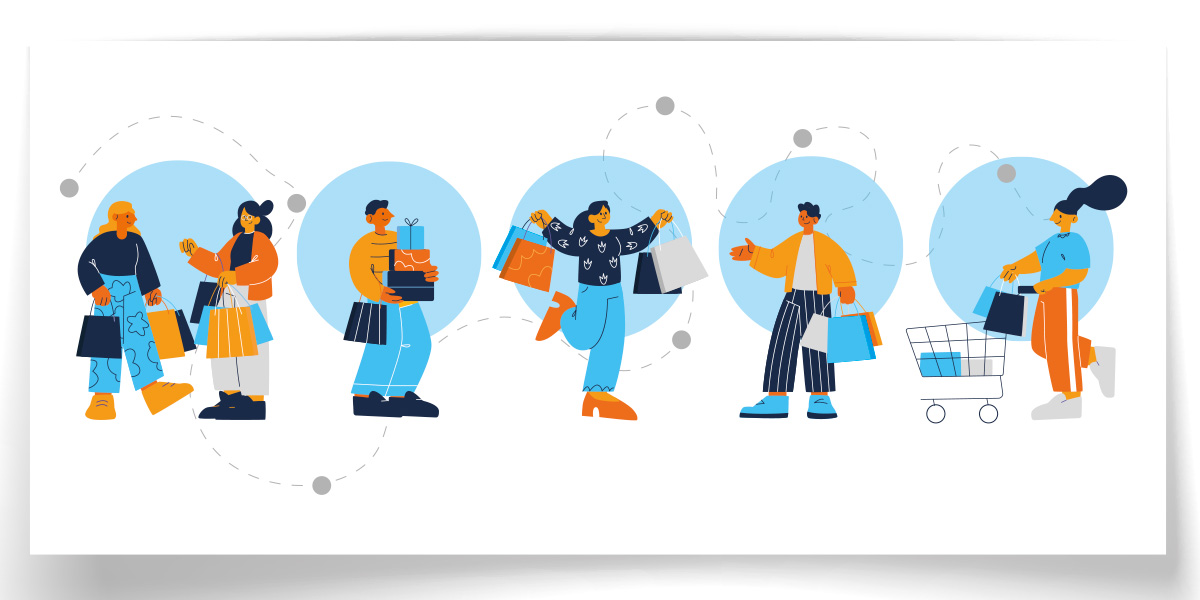The fashion industry is one of the largest in the world, with pre-pandemic global sales reaching $2.5 trillion annually. Like any other industry, fashion has the potential to enhance our daily lives through cutting-edge technology and personalized services. To stay competitive, retailers must deliver flawless customer experiences that seamlessly blend physical and online shopping.
In this blog post, we’ll explore how seamlessly integrating online and offline experiences can make a world of difference to shoppers. Let’s explore this customer story through two different experiences.
Version 1: A frustrating search
Meet Taylor, a young fashion lover searching for the perfect shirt. She enters a local clothing store, hoping to lay hands on a cute outfit for her upcoming party. As she scans the store, she spots a mannequin wearing a top, skirt and shoes that look great together. But her excitement quickly turns to frustration. Though she is able to find the top, she can’t find her size. She glances around, hoping to spot a salesperson for assistance, but there is no one in sight. Since she likes the shirt so much, she takes the next size up – who knows, maybe it will fit. She walks around the entire store before finding the other two pieces of the outfit on the mannequin. By this time, the fitting room lines are long and the checkout line seems endless too. The store feels overwhelming and Taylor’s enthusiasm begins to fade. She leaves the store disappointed – without the cute outfit.
Version 2: Technology and shopping hand in hand
Now let’s re-imagine Taylor’s experience through the lens of innovative technology. As she enters the clothing store, Taylor notices a QR code next to the mannequin with the cute outfit. Intrigued, she pulls out her smartphone, opens the store’s app, and scans the QR code. Within seconds, a virtual closet of the shirt she’s interested in appears on her screen. Not only does she see all the shirt sizes and colors available, but the app also shows her a shop-the-look feature that allows her to add the entire outfit to her shopping cart with one click. A pop-up window informs her that a purchase within the next 24 hours guarantees free three-day shipping – enough time for her to browse for accessories. And the best part? Her outfit arrives before the party & without any frustration.
Connecting the Dots: Insights for Fashion Shops
In a world where fashion trends change rapidly, one constant is the desire for a seamless and easy customer experience. By bridging the gap between online and offline shopping, the fashion industry can turn everyday interactions into memorable and enjoyable moments.
These two versions of Taylor’s shopping experience reveal key insights that all retailers, regardless of size, can use to increase customer satisfaction and loyalty.
1. Embrace multichannel communications
Just as in version 1, where Taylor struggled to find help, customers in the fashion industry often face similar challenges. (Online) retailers should identify and integrate multiple communication channels that align with customer preferences. Whether through apps, websites, live chats, or even in-store assistance, understanding customer preferences creates a more empathetic and personalized experience. Keep in mind that preferences can vary based on context and circumstances – if you’re not sure what works best, try a/b testing options!
2. Increase convenience and time savings
Version 2 highlights the importance of convenience in the customer experience. Time is precious for customers, and seamless access to information through technology can have a significant impact on their shopping journey. A well-designed app or mobile-optimized website that provides instant access to product details, sizing information, product bundling and even real-time assistance can lead to greater customer loyalty.
3. Enrich the customer’s life
Today’s fashion industry is about more than selling products—it’s about creating inspirational shopping experiences that build trusting relationships. Just as Version 2 empowered Taylor with information and support, online shops should consider how their offerings can add lasting value to the customer experience. This could include personalized recommendations, size guides, style tips, and even notifying customers when their desired items are back in stock.
Looking for more inspiration? Take a look at our whitepaper for the fashion industry!
